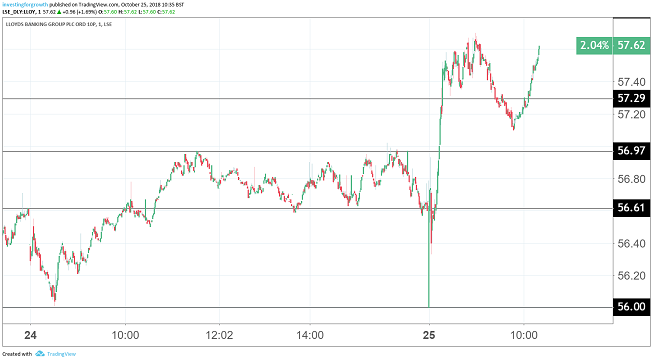Buyers return to Lloyds Bank shares
25th October 2018 10:45
by Richard Hunter from interactive investor
With fears around Brexit and prospects for the wider retail bank sector causing problems for Lloyds, Richard Hunter, head of markets at interactive investor, analyses these third-quarter results.

Lloyds Banking Group remains in rude health, as it now accelerates its efficient business model having left behind its previous issues.
Despite a slip in profits for the period, in the year to date pre-tax profit is above consensus, having risen 10%, and the post-tax number is up 18%.
A scan of the metrics reveals progress on any number of fronts. Return on Capital and earnings per share measures are strongly ahead, the capital cushion remains robust and the net interest margin is stable.
- A big question for Lloyds Bank shareholders
- Does Barclays profit hike signal change of fortune?
- The week ahead: Lloyds Bank, Barclays, RBS
Meanwhile, the cost/income ratio has fallen further to an impressive 47.5% and the bank's ability to generate cash not only underpins a generous 5.5% dividend yield but also raises the likelihood of future supportive share buybacks.
In addition, after the disappointment of the additional PPI provision at the half-year numbers in August, there is no such repeat today. From a strategic perspective, Lloyds continues to tighten its grip in the digital space, whilst the recently announced tie-up with Schroders is an interesting move with lofty ambitions.

Source: TradingView one-minute chart (*) Past performance is not a guide to future performance
However, UK bank stocks have been out of favour for some time. Lloyds bears the additional weight of being seen as a proxy for the UK economy, whose growth has been hampered by the Brexit dilemma.
Within the numbers, an increase in impairment charges needs monitoring, particularly as the bank ramps up its lending in what could be a rising interest rate environment. The UK consumer, let alone the economy, could yet derail some of Lloyds progress to date even though such a decline would be largely outside of the bank's control.
The share price has not mirrored the lustre of its performance, having dropped 16% over the last year, as compared to a 6.5% loss for the wider FTSE 100, and is down 13% in the last six months alone.
One thing which has changed, however, is the market consensus – based on an undemanding valuation and with the business making further headway, the general view has more recently improved to a 'buy'.
*Horizontal lines on charts represent previous technical support and resistance. Red lines represent uptrends and downtrends.
These articles are provided for information purposes only. Occasionally, an opinion about whether to buy or sell a specific investment may be provided by third parties. The content is not intended to be a personal recommendation to buy or sell any financial instrument or product, or to adopt any investment strategy as it is not provided based on an assessment of your investing knowledge and experience, your financial situation or your investment objectives. The value of your investments, and the income derived from them, may go down as well as up. You may not get back all the money that you invest. The investments referred to in this article may not be suitable for all investors, and if in doubt, an investor should seek advice from a qualified investment adviser.
Full performance can be found on the company or index summary page on the interactive investor website. Simply click on the company's or index name highlighted in the article.